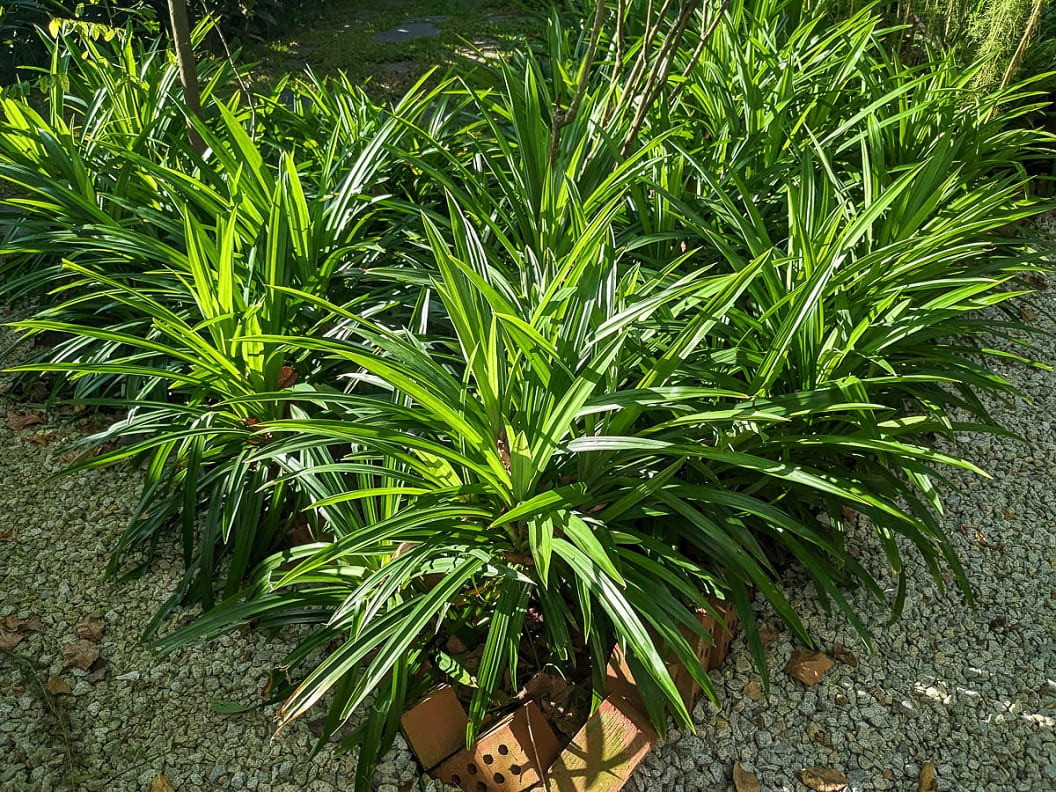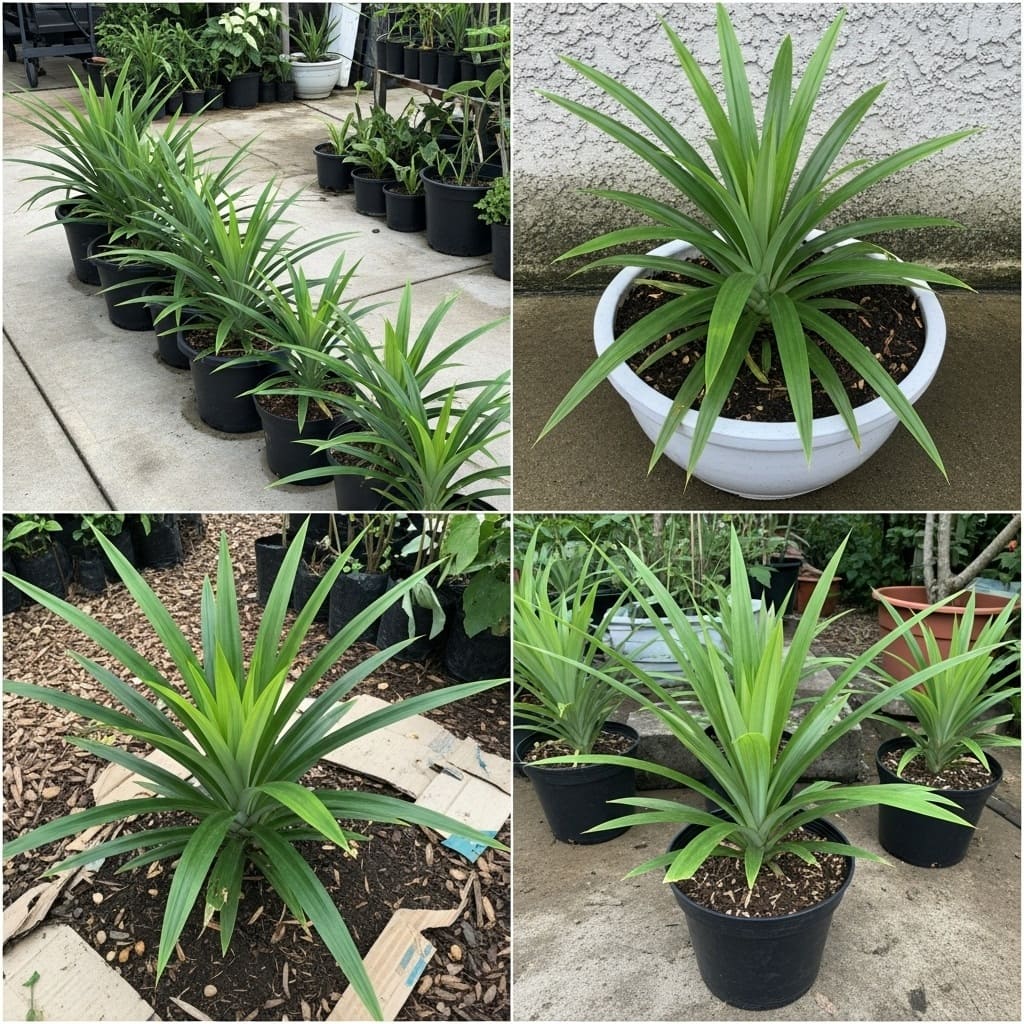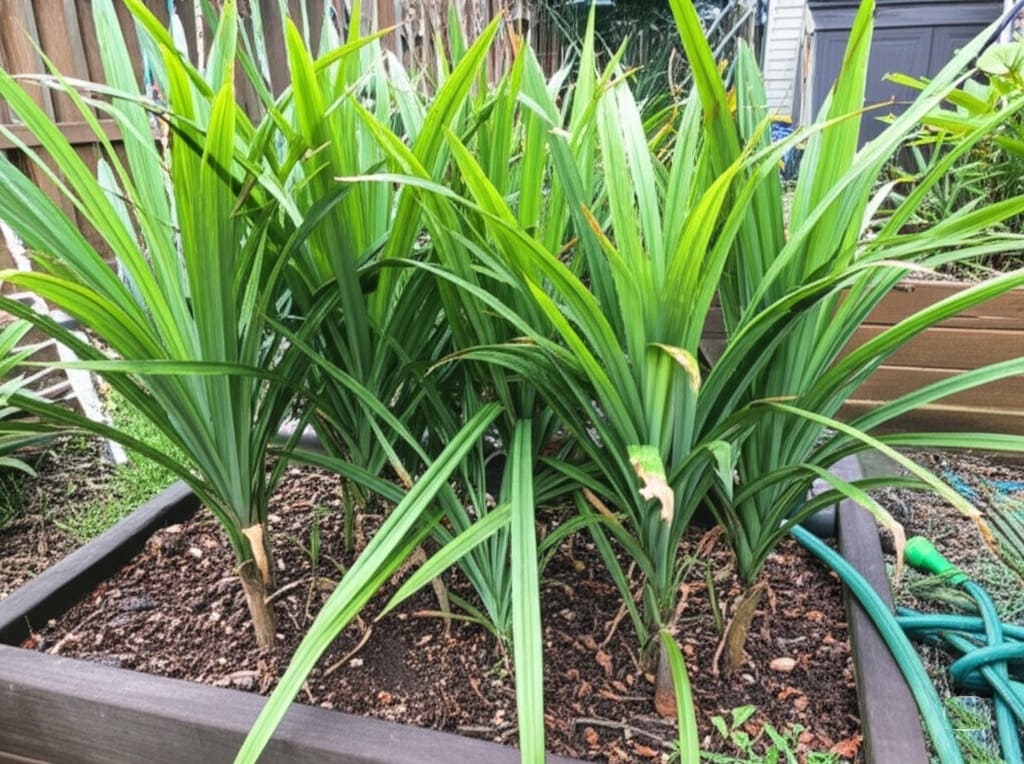The first time I caught a whiff of pandan leaves steaming with rice in my neighbor’s kitchen, I knew I had to have this plant. That sweet, vanilla-coconut aroma transported me straight to a tropical paradise—and I was hooked.
Little did I know that three years later, I’d have not one, but seven thriving pandan plants scattered around my home, each one teaching me something new about this remarkable “vanilla of the East.”
If you’ve ever wondered about growing your own pandan (Pandanus amaryllifolius), you’re in for a treat. This comprehensive guide will walk you through everything from understanding what makes pandan special to mastering the art of propagation, regardless of your climate or experience level.
Why Pandan Deserves a Spot in Your Garden
Before we dive into the how-to, let’s talk about why pandan is worth the effort. This isn’t just another houseplant—it’s a gateway to authentic Southeast Asian cuisine right from your backyard.
Pandan’s long, blade-like leaves contain a compound called 2-acetyl-1-pyrroline, which gives them their distinctive fragrance. When you crush or boil the leaves, they release this incredible aroma that’s been described as a blend of vanilla, coconut, and fresh bread.
In cooking, pandan leaves are used to wrap meats, flavor rice dishes, and create that gorgeous green color in desserts and drinks.
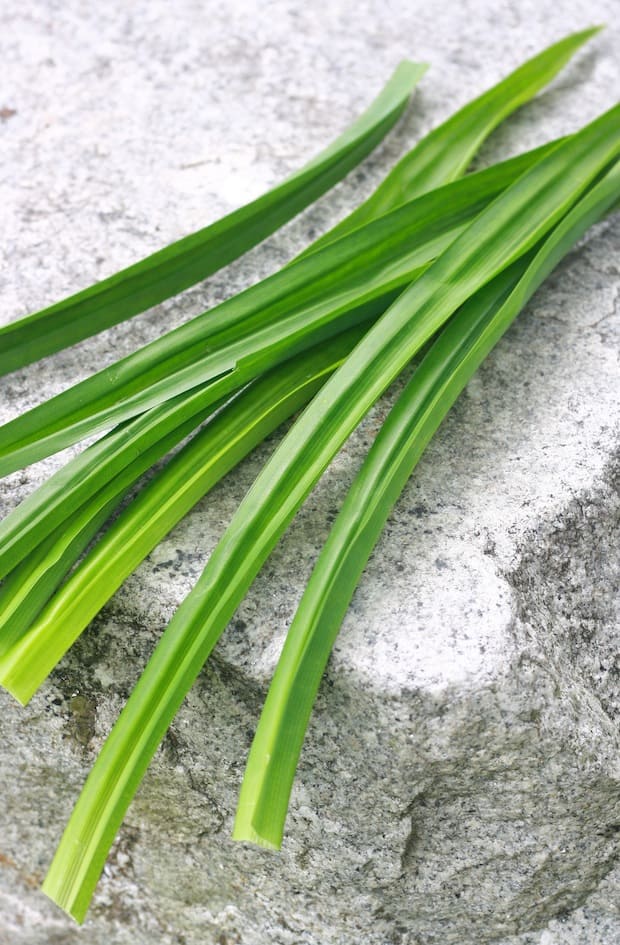
But here’s what surprised me most: pandan isn’t just about food. Those same aromatic compounds that make your kitchen smell amazing also act as natural pest repellents.
I’ve noticed significantly fewer cockroaches in my pantry since I started keeping dried pandan leaves in my storage containers. Traditional medicine also values pandan for treating minor ailments like headaches and joint pain.
Understanding Your Pandan Plant
Pandan is a tropical evergreen that belongs to the screwpine family. In its native Southeast Asian habitat, it can grow into a small tree reaching 2-4 meters tall. However, when you regularly harvest the leaves (which you’ll want to do), it stays much more manageable as a compact shrub around 1-1.5 meters.
One of pandan’s most distinctive features is its aerial roots—thick, woody roots that emerge from the stem and help anchor the plant. Don’t worry if you see these appearing; they’re completely normal and actually a sign of a healthy, mature plant. These roots are also what make propagation so successful.

Your pandan plant will typically take 12-18 months to reach full maturity from a small cutting, though you can start harvesting leaves much earlier once the plant establishes itself.
Climate Zones and Growing Strategies
- Tropical Paradise (Zones 10-11)
If you’re blessed with a tropical climate, pandan can live permanently outdoors. Plant it in a spot with morning sun and afternoon shade, keep the soil consistently moist, and watch it flourish. These are the ideal conditions where pandan really shows its stuff.
- Subtropical Challenges (Zones 8-9)
This is where I learned to be creative. Pandan can survive brief cold snaps down to about 7°C (45°F), but anything colder will damage the leaves. Container growing is essential here—you’ll need to move plants indoors when temperatures drop below 10°C (50°F).
I use a simple strategy: large pots on plant caddies that roll easily. When the weather forecast shows temperatures dropping, I simply wheel them into a bright, unheated garage or sunroom.
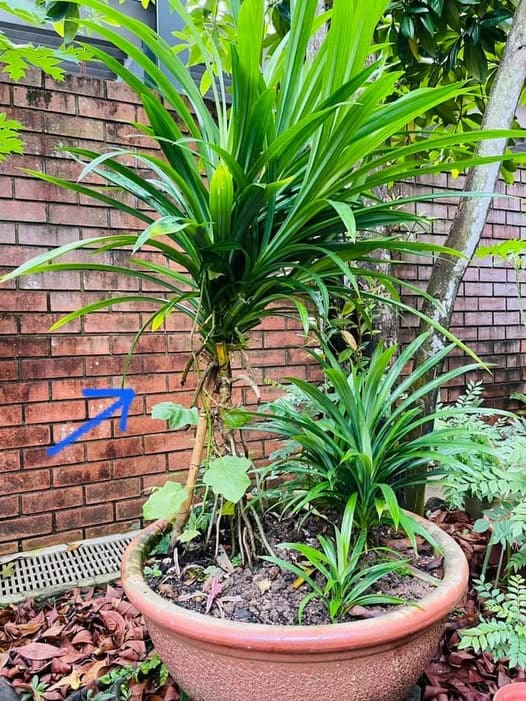
- Temperate Dedication (Zones 7 and below)
Don’t let cooler climates discourage you! Pandan makes an excellent houseplant if you can provide the right conditions. You’ll need bright, indirect light (or grow lights), consistent humidity, and protection from cold drafts and heating vents.
Explore Shade-Loving Herbs and Vegetables That Grow With Less Sunlight
Soil and Container Essentials
The Perfect Growing Medium
Pandan thrives in rich, well-draining soil that holds moisture without becoming waterlogged. My go-to mix combines equal parts quality potting soil, compost, and coarse sand or perlite. This creates the perfect balance of nutrition, drainage, and moisture retention.
For pH, pandan is quite forgiving, thriving anywhere from 5.5 to 7.5. I’ve never had to adjust my soil pH, and my plants are thriving in regular garden soil mixed with compost.
Container Specifications
Size matters more than you might think with pandan. These plants develop extensive root systems and multiple offshoots, so they need room to spread. Here’s my sizing guide:
- Young plants: Start with 5-gallon containers
- Mature plants: Upgrade to 15-20 gallon containers
- Established colonies: Consider 25+ gallon containers or raised beds
Choose wide, shallow pots rather than deep, narrow ones. Pandan has a relatively shallow root system, so a wide container gives the roots room to spread while preventing water from pooling at the bottom.
Critical drainage tip: Drill drainage holes about one-third up from the bottom rather than at the very bottom. This creates a small water reservoir that keeps the soil consistently moist without causing root rot.
Mastering Light and Positioning
This is where many new pandan growers stumble. Despite being tropical, pandan doesn’t want blazing sun all day. Think of it as preferring the dappled light of a tropical forest understory.
Outdoor Positioning
I position my outdoor pandan where it gets 4-6 hours of bright morning sun and filtered afternoon light. East-facing locations are ideal, while south-facing spots need afternoon shade protection. Avoid windy locations—constant air movement will dry out the leaves and stress the plant.
Indoor Light Requirements
For indoor growing, an east or west-facing window provides ideal conditions. If natural light is limited, supplement with grow lights positioned 12-18 inches above the plant and run for 12-14 hours daily during winter months.
Signs your pandan needs more light include pale, weak growth and loss of fragrance. Too much direct sun shows up as brown, crispy leaf edges and yellowing.
Explore the Best Air-Purifying Indoor Plants That Thrive Without Direct Sunlight
Watering Wisdom: The Foundation of Success
Watering pandan is all about consistency and observation. These plants love moisture but hate soggy feet—a balance that takes practice to master.
Seasonal Watering Schedule
Spring through Fall (Growing Season)
- Check soil moisture every 2-3 days
- Water when the top inch feels dry
- Water deeply until it drains from the bottom
- In hot weather, this might mean watering every other day
Winter (Dormant Season)
- Reduce watering frequency to once weekly
- Keep soil barely moist, not wet
- Never let water sit in the crown during cold weather
- Reduce humidity to prevent fungal issues
The Humidity Factor
Pandan craves humidity, especially indoors. I use several methods to maintain the 60-70% humidity these plants prefer:
- Humidity trays: Fill shallow trays with pebbles and water
- Grouping: Cluster plants together to create microclimates
- Misting: Light morning misting (avoid evening misting in cool weather)
- Room humidifiers: Essential for indoor growing in dry climates
Feeding Your Pandan for Optimal Growth
Pandan plants are surprisingly unfussy about fertilizer, but they do appreciate regular feeding during the growing season.
Fertilizer Schedule and Types
Growing Season (Spring-Fall)
- Balanced liquid fertilizer (10-10-10) every 2-3 weeks
- Dilute to half strength to prevent burning
- Supplement with fish emulsion monthly for extra nitrogen
- Add seaweed extract during repotting for root development
Dormant Season (Winter)
- Stop fertilizing completely
- Resume feeding when new growth appears in spring
Organic Alternatives
I prefer organic options when possible. Compost tea every two weeks works beautifully, as does well-aged chicken manure worked into the soil surface. Slow-release organic fertilizers applied in spring provide steady nutrition throughout the growing season.
Propagation: Growing Your Pandan Family
This is where pandan really shines—it’s incredibly easy to propagate, and honestly, it’s one of the most rewarding aspects of growing these plants. Pandan naturally produces offshoots (called suckers or pups) from its base, and each one can become a new plant.
Recognizing Ready-to-Propagate Pups
Look for offshoots that meet these criteria:
- At least 6 inches tall
- 3-4 healthy leaves
- Visible aerial roots at the base
- Stems thick enough to handle separation
Water Propagation Method (My Preferred Technique)
This method gives me the highest success rate:
- Clean separation: Use a sharp, sterile knife to cut the pup from the mother plant
- Prep the cutting: Remove lower leaves, exposing 2-3 inches of stem
- Water setup: Place in a jar with the aerial roots submerged
- Maintenance: Change water every 2-3 days, add liquid kelp fertilizer
- Root development: New roots appear in 2-3 weeks
- Transplant timing: Wait until roots are 2-3 inches long before potting
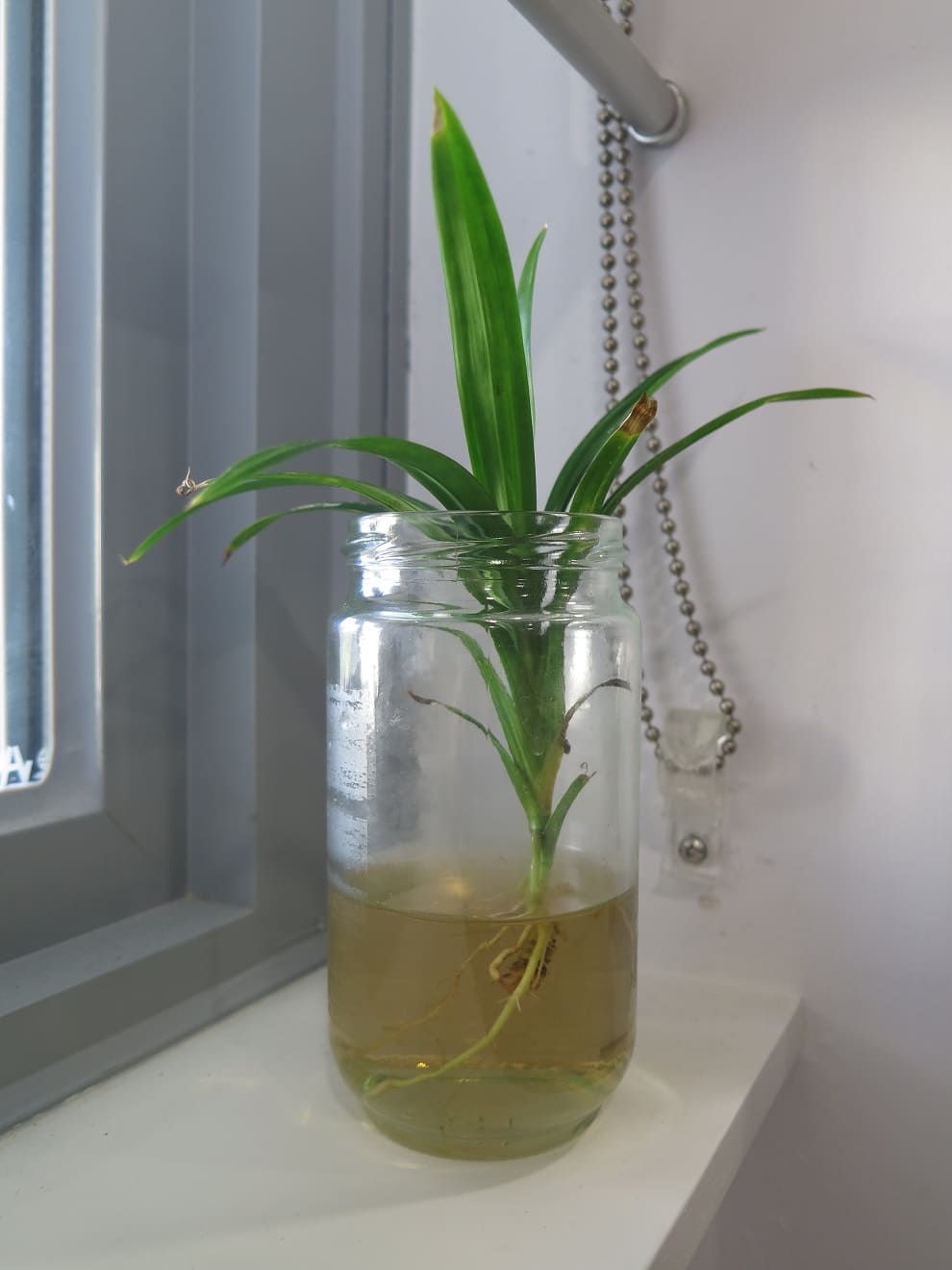
Direct Soil Method
For pups with well-developed aerial roots, you can plant directly:
- Soil preparation: Use moist, well-draining potting mix
- Planting depth: Bury the stem up to the base of the lowest leaves
- Initial care: Keep in bright, indirect light for 2-3 weeks
- Watering: Maintain consistent moisture without waterlogging
Signs of Successful Propagation
- New leaf growth from the center
- Roots visible at drainage holes
- Firm, upright growth
- Return of characteristic pandan fragrance
Seasonal Care Strategies
- Spring: The Awakening
This is when pandan really comes alive. Resume regular fertilizing, increase watering frequency, and watch for new growth. Spring is also the perfect time for repotting if needed—look for roots growing out of drainage holes or plants that seem too large for their containers.
- Summer: Peak Growing Season
Pandan puts on most of its annual growth during summer. Maintain consistent moisture, provide afternoon shade in hot climates, and harvest leaves regularly to encourage new growth. This is prime time for propagation activities.
- Fall: Preparation Mode
As temperatures begin to drop, gradually reduce watering and stop fertilizing. If you’re in a cooler climate, start planning your winter protection strategy. Clean up any dead or damaged leaves to prevent pest issues.
- Winter: Survival Mode
In cold climates, this is about keeping plants alive rather than encouraging growth. Reduce watering significantly, maintain humidity, and keep plants away from heat sources. Don’t be alarmed if growth stops completely—this is normal.
Repotting and Plant Maintenance
When to Repot
Pandan plants need repotting every 2-3 years, or when you notice:
- Roots growing out of drainage holes
- Water running straight through without being absorbed
- Plant appearing too large for its container
- Soil breaking down and staying soggy
Repotting Process
- Timing: Early spring, just as new growth begins
- Size up: Choose a container 2-4 inches larger in diameter
- Soil refresh: Use fresh potting mix, adding compost for nutrition
- Root inspection: Trim any dead or damaged roots
- Aftercare: Water with seaweed extract to reduce transplant shock
Pruning and Maintenance
Regular maintenance keeps pandan plants healthy and productive:
- Remove dead or yellowing leaves promptly
- Trim damaged leaf tips with clean scissors
- Harvest older leaves from the bottom up
- Divide overcrowded plants every 2-3 years
Here’s How to Prune Roses: A Simple Guide for Stunning Results
Harvesting and Using Your Pandan
Harvesting Techniques
Proper harvesting encourages new growth and maintains plant health:
- Leaf selection: Choose mature, dark green leaves from the bottom of the plant
- Harvesting method: Grasp the main stem with one hand, pull the leaf downward with the other
- Safety first: Always wear gloves—pandan leaves can have sharp edges
- Timing: Harvest in the morning when leaves are fully hydrated

Preparing Pandan for Cooking
Fresh pandan leaves need preparation to release their full flavor:
For wrapping and flavoring:
- Rinse leaves thoroughly and pat dry
- Tie in knots for easy removal from soups and stews
- Bruise leaves lightly before using to release oils
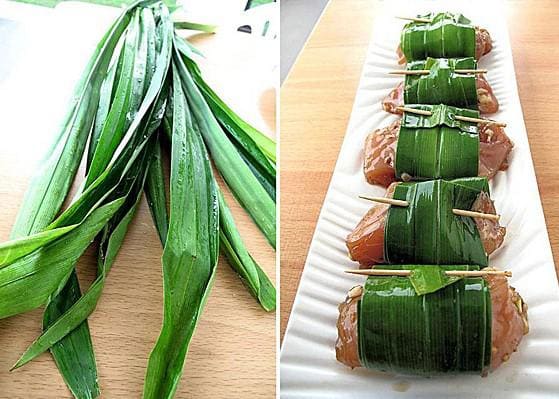
For extract and paste:
- Cut leaves into 1-inch pieces
- Blend with minimal water (1 cup leaves to 1/2 cup water)
- Strain through fine mesh or cheesecloth
- Let settle overnight—paste will separate from juice
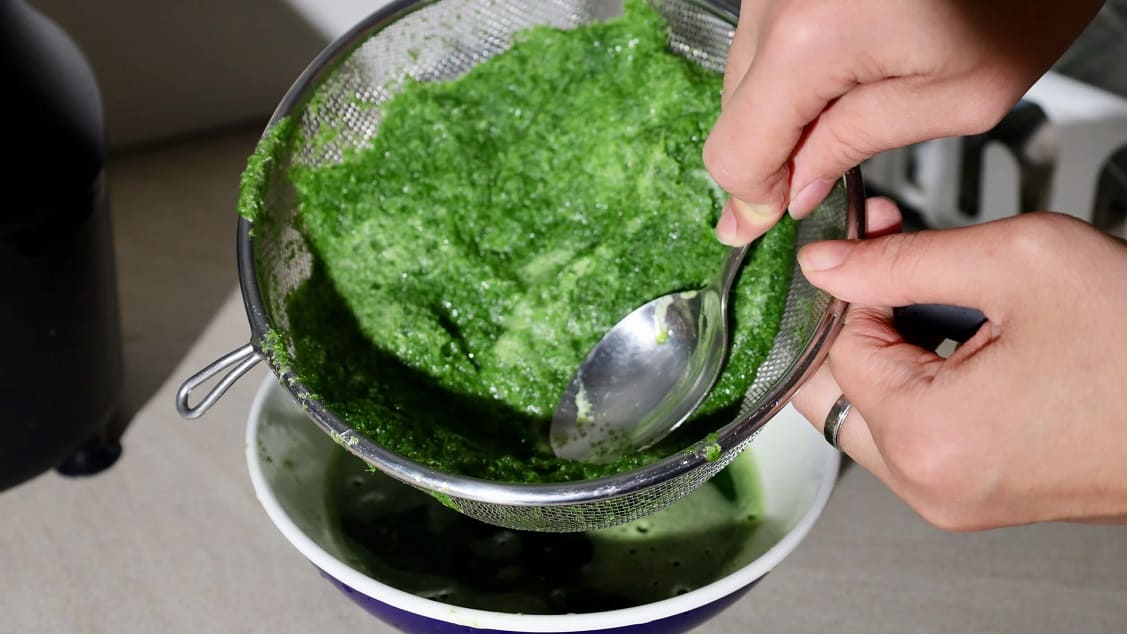
Storage Solutions
- Fresh leaves: Refrigerate in sealed bags for up to one week
- Frozen leaves: Freeze in portions for up to 6 months
- Extract: Refrigerate for up to 3 weeks, freeze for longer storage
- Dried leaves: Air dry for pest control use (loses culinary value)
Troubleshooting Common Issues
Yellowing Leaves
This is the most common concern I hear from new growers. Yellow leaves can indicate:
- Overwatering: Check drainage and reduce watering frequency
- Underwatering: Increase watering and improve humidity
- Cold stress: Move to warmer location or provide protection
- Natural aging: Bottom leaves naturally yellow and drop

Discover Why Are My Cucumber Leaves Turning Yellow? Top Causes & Solutions
Pest Problems
While pandan is generally pest-resistant, watch for:
- Aphids: Treat with insecticidal soap or neem oil
- Mealybugs: Dab with rubbing alcohol or use systemic insecticide
- Spider mites: Increase humidity and use miticide if severe
- Scale insects: Scrape off manually and treat with horticultural oil
Growth Issues
Slow or stunted growth usually indicates:
- Insufficient light (increase gradually)
- Poor drainage (improve soil mix)
- Rootbound conditions (repot to larger container)
- Nutrient deficiency (resume fertilizing schedule)
Leggy, weak growth suggests:
- Too much shade (increase light exposure)
- Over-fertilizing (reduce feeding frequency)
- Need for division (separate overcrowded plants)
Advanced Growing Tips
Creating a Pandan Grove
Once you’ve mastered growing single plants, consider creating a pandan grove. Group 3-5 plants together for stunning visual impact and improved humidity. Space plants 2-3 feet apart to allow for growth and air circulation.
Companion Planting
Pandan pairs beautifully with other tropical plants:
- Lemongrass: Similar growing requirements and culinary uses
- Kaffir lime: Complementary in cooking and growing needs
- Thai basil: Adds fragrance and attracts beneficial insects
- Galangal: Another Southeast Asian essential with similar care needs
Read The Ultimate Companion Planting Guide with 422 Plant Combinations That Actually Work
Maximizing Fragrance
To encourage maximum fragrance production:
- Harvest regularly to stimulate new growth
- Maintain consistent moisture levels
- Provide bright, indirect light
- Avoid stress from temperature extremes or poor drainage
Building Your Pandan Legacy
Growing pandan has taught me that gardening is as much about patience as it is about technique. My journey from one struggling plant to a thriving collection didn’t happen overnight—it took experimentation, failure, and the willingness to learn from each setback.
Start with one healthy plant and focus on mastering the basics: proper soil, consistent watering, and appropriate lighting. Once you’ve got those fundamentals down, propagation becomes an exciting way to expand your collection and share with fellow gardeners.
I’ve found that pandan plants have personalities. Some are vigorous growers that produce pups constantly, while others are more reserved, focusing their energy on producing intensely fragrant leaves. Learning to work with each plant’s individual nature is part of the joy of growing pandan.
Your Questions Answered
- How long before I can harvest leaves from a new plant?
Young plants need 6-8 months to establish before regular harvesting. Start with just 1-2 leaves per month, increasing as the plant matures.
- Can I grow pandan under artificial lights year-round?
Absolutely! Use full-spectrum LED grow lights for 12-14 hours daily. Many of my indoor plants thrive under artificial lighting.
- Why do my pandan leaves lack fragrance?
Stress from inconsistent watering, poor light, or temperature extremes reduces fragrance. Improve growing conditions and be patient—fragrance often returns.
- How do I transition outdoor plants indoors for winter?
Gradually move plants to shadier outdoor locations over 1-2 weeks, then bring indoors. This prevents shock from sudden light changes.
- When is the best time to divide large pandan plants?
Early spring, just as new growth begins. This gives plants the full growing season to establish.
The Sweet Reward
There’s something magical about stepping into your garden and harvesting fresh pandan leaves for that evening’s meal, knowing you’ve grown this exotic treasure yourself. The aroma that fills your kitchen when you add homegrown pandan to your rice or dessert is incomparable to store-bought alternatives.
Growing pandan connects you to centuries of Southeast Asian culinary tradition while providing a unique gardening challenge that rewards patience and attention to detail. Whether you’re drawn by the incredible fragrance, the culinary possibilities, or simply the satisfaction of growing something special, pandan offers rewards that go far beyond the garden.
Remember, every expert was once a beginner. Start with one plant, focus on creating the right environment, and don’t be discouraged by initial setbacks. Each challenge is a learning opportunity, and soon you’ll be sharing cuttings with friends and family, spreading the joy of homegrown pandan one plant at a time.
The journey from pandan novice to expert is filled with small victories, learning moments, and the incredible satisfaction of growing something truly special. Welcome to the wonderful world of pandan—your kitchen and your garden will never be the same.
